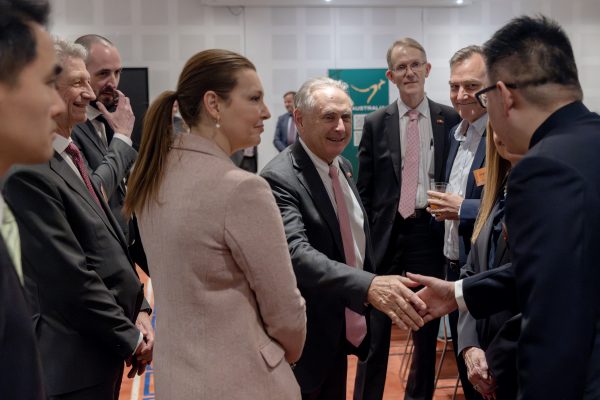Towards the end of the Liberal–National coalition government of former prime minister Scott Morrison, there was a growing sense, even among those who shared in the alarm about political and foreign policy trends in Xi-era China, that the toxic state of the relationship was unsustainable. Cool heads in Beijing would likewise have seen no cause for gloating about having put Australia in its place with bans on China-dependent export industries. As East Asia Forum put it recently, ‘in exchange for forfeiting its hard-won reputation as a reliable trading partner, all Beijing got in return was AUKUS and the hostility of the Australian public and political class.’
When the change of government in Canberra provided an off-ramp, both governments took it.
As Neil Thomas argues in this week’s lead article, Albanese’s government ‘has overseen a turnaround in Canberra’s relations with Beijing that hints at a larger scope for other countries to balance business and security in their dealings with China.’
China has already lifted restrictions on Australian coal and timber imports. Australia has ‘paused’ its WTO challenge to the huge tariffs China slapped on Australian barley, although there has so far been no outcome from China’s ‘review’ of those tariffs. Crippling snap tariffs on wine and lobsters are likewise still in force. Perhaps a more difficult issue to settle between the two countries is the status of two Australians detained in China on vague ‘security’-related charges.
Given the failure to resolve these issues, and the collapse in Australian voters’ perceptions of China, it would seem on the face of it that Albanese is taking political risks in pursuing normalisation of relations with Beijing. But Australians understand the pragmatic value of engagement in resolving the issues that are still outstanding, and the Australian government can be confident of the public’s patience for now.
It helps that, as Thomas argues, ‘Albanese has not weakened Australia’s position on any of China’s stated grievances. Canberra is enhancing its support for the US-led security architecture’, via the QUAD and AUKUS, and has kept its powder dry on the question of Beijing’s accession to the CPTPP. The weakening of China’s economy and its strained relations with many Western governments are giving added impetus to its efforts to restore functional relations.
It’s still hard to avoid the sense that a political clock is ticking for the Albanese government on its China strategy. Over the next 6 to 12 months, its domestic standing will be tested as it seeks to manage the economic impacts of the central bank’s inflation-busting efforts, address Australia’s housing affordability crisis and deal with the potential failure of a landmark referendum on institutionalising a representative body for Australia’s indigenous peoples in the national constitution.
All of these issues will tax the government’s reserves of political capital, leaving less scope for brushing off criticism of its China engagement strategy, and that tax will only increase if dialogue continues indefinitely without yielding more breakthroughs on trade restrictions or the freeing of the two imprisoned Australians.
These political trends conspire to raise the importance of Albanese’s as-yet unconfirmed but widely anticipated visit to China late in 2023. Already the prime minister is facing calls to put the trip on ice in response to the continued detention of the two Australian nationals and Hong Kong authorities’ putting a bounty on Australia-based democracy activists.
That would be a mistake. As Thomas suggests, a visit ‘would preserve productive momentum in bilateral ties without diluting Australia’s dedication to a rules-based international order. It would raise the chances of Beijing lifting residual trade controls. It would show regional countries that Canberra recognises their and its own need to coexist with China’.
For these reasons, Australia should hold fast to its stated strategy of not putting preconditions on a resumption of upgraded dialogues with China. Rejecting Beijing’s invitation to a leader’s visit will all but guarantee the trade sanctions will remain in place. And for what benefit?
One factor in the deterioration of US–China relations has been that both governments have let face-to-face dialogue become hostage to what ought to be manageable diplomatic crises. A case in point was the utterly counterproductive decision by Secretary of State Anthony Blinken to cancel a trip to China in response to the ‘balloongate’ debacle — and, for its part, the Chinese government’s risky propensity for using dialogue itself as a bargaining chip.
Australia should resist the urge to fall into this trap. There is nothing to lose in pursuing the opportunity for Albanese to visit China as early as possible — indeed, as Thomas argues, it is likely the best hope of accelerating progress on unresolved bilateral issues. It may help grow some political capital.
Important as these short-term tactical questions are, the bigger challenge is what comes after ‘stabilisation’. As Thomas writes, the Albanese détente ‘is vulnerable to a US–China crisis or a resurgence in Beijing’s assertive diplomacy’. On the latter point, one can only hope that China has realised the limits of its sharp-elbowed dealings with the outside world in pursuit of its interests.
The former is where the Australian agency might be focused — making it clear, along with partners in Northeast Asia and ASEAN, that the smaller and middle powers of the Asia Pacific don’t want to be caught in the middle of a new cold war.
Australia’s space to strike the right balance between commerce, cooperation and security in the bilateral relationship with China will depend not only on how Australia can make its voice heard in Beijing, but in Washington as well.
The EAF Editorial Board is located in the Crawford School of Public Policy, College of Asia and the Pacific, The Australian National University.

